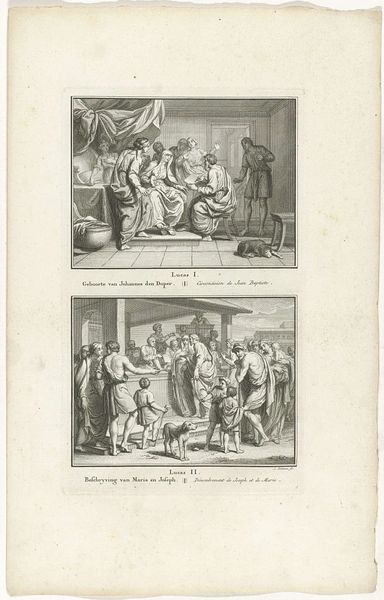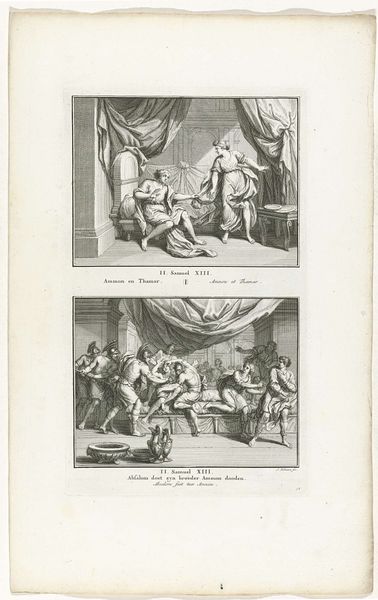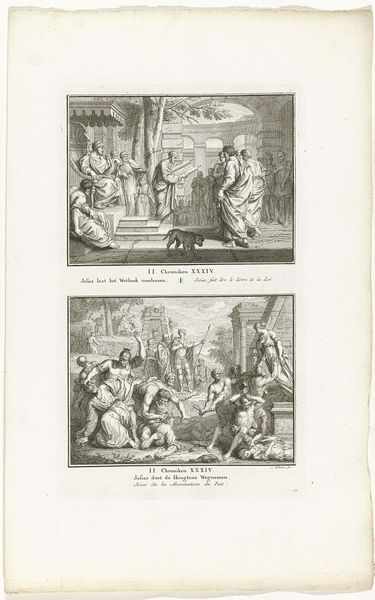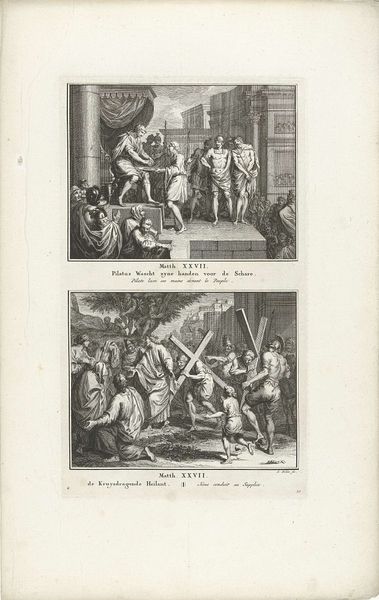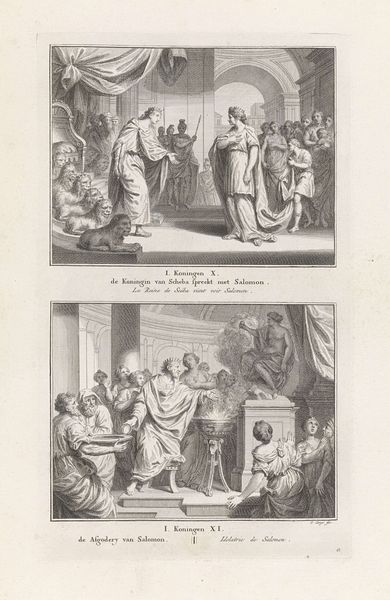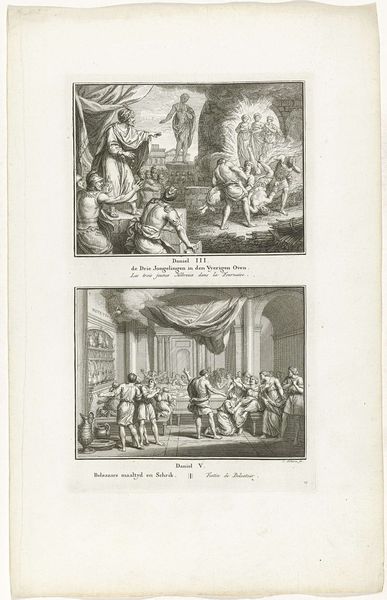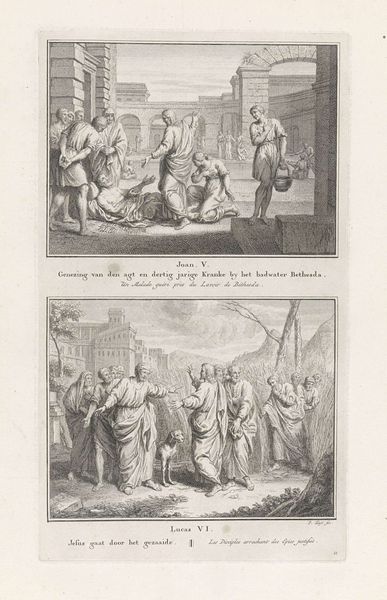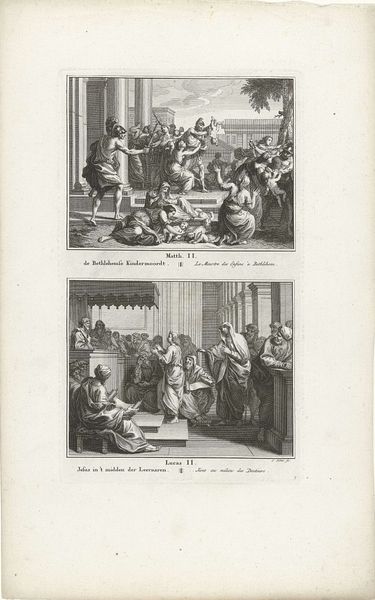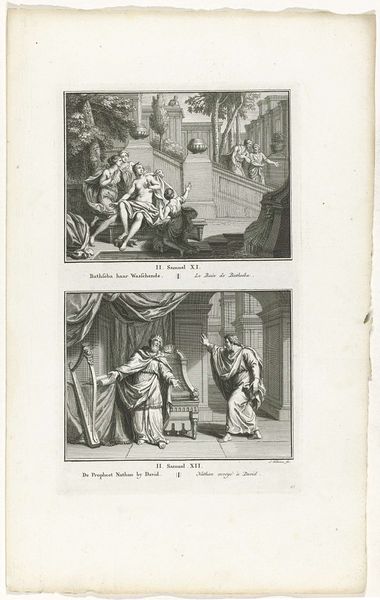
Jozef ontvlucht Potifars vrouw en Jozef door Potifars vrouw beschuldigd 1791
0:00
0:00
simonfokke
Rijksmuseum
Dimensions: height 324 mm, width 193 mm
Copyright: Rijks Museum: Open Domain
Curator: Welcome. We are looking at a print from 1791 by Simon Fokke, titled "Jozef ontvlucht Potifars vrouw en Jozef door Potifars vrouw beschuldigd." It’s an engraving depicting two scenes from the biblical story of Joseph and Potiphar's wife. Editor: Wow, it’s… well, dramatic! Even though it’s just lines, the artist captures a moment of sheer panic, I feel the adrenaline coursing through Joseph's veins! Curator: Indeed! This piece provides insight into how narratives were disseminated visually during the late 18th century. Fokke's work exemplifies the engraver’s role in shaping public understanding of religious stories, especially during a period where printed materials had an ever growing reach and importance in social life. Editor: The upper scene, where Joseph's fleeing—it’s charged with desperate energy. Her attempt to seduce Joseph is, to say the least, rendered as quite passionate; she's all tangled in the sheets, looking scandalized. Curator: Precisely, and look how the architecture serves the scene, boxing them in, creating that charged sense of location before he breaks free of the scene altogether. Editor: Then below, the scene of accusation is staged almost theatrically; with Potiphar looking as if he’s been ripped straight from an opera. Classic, operatic gesture. But that stark contrast gets me! To flee that passion is what sets off her vengeance and transforms his world completely. All those accusations, so rooted in gender, the structures of that time still feel shockingly relevant. Curator: Agreed, and within that societal context, an artist such as Fokke held a prominent role of articulating and, indeed, reinforcing these moral lessons via easily accessible visual materials. Think of these prints not only as decoration but as critical pedagogical tools. Editor: It’s wild how a single piece of paper, etched with lines, can hold so much historical weight, social commentary, even still echo within the cultural conversations of today. An object lesson in itself. Curator: Yes, a quiet revolution, in that way. The very best art historical works still hold relevance today.
Comments
No comments
Be the first to comment and join the conversation on the ultimate creative platform.
